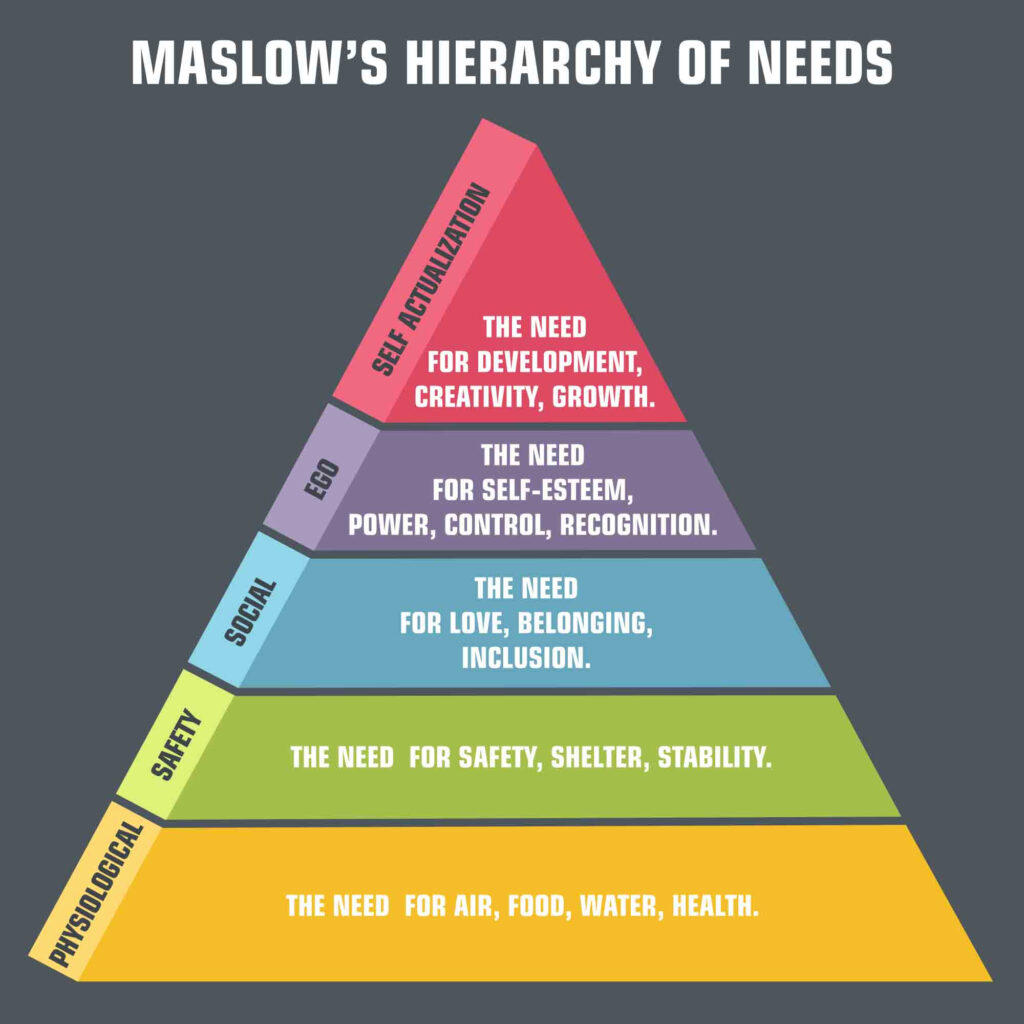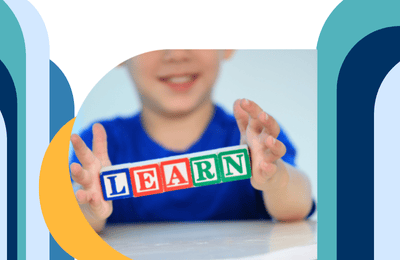What is Maslow’s Hierarchy of Needs theory?
Abraham Maslow created a hierarchy of human needs in the late 1960s. Maslow emphasised that a person’s motivational state is not as unchanging as is frequently thought. Maslow postulates a hierarchy of requirements for people, each of which must be partially met before the next level may take hold. These requirements are classified as being: physiological, safety, belongingness and love, esteem, and self-actualization, in that order. Maslow focused on human potential since he thought that people want to maximise their potential.
There are two categories of requirements in this five-stage model: deficiency needs and growth needs. Deficiency needs (D-needs) are a common term for the first four levels, while growth or being needs (B-needs) are a common name for the top level. Deficiency needs develop as a result of deprivation and are thought to motivate individuals when they go unsatisfied. Additionally, the longer these needs go unmet, the stronger the drive to satisfy them will be. Let’s take a brief glance at Maslow’s Hierarchy of Needs.
-
Physiological Needs
These biological necessities—for instance air, food, drink, shelter, clothes, warmth, sex, and sleep—are necessary for human life. For motivation theory, physiological needs are often assumed to be the first basis.
-
Safety Needs
When the physiological demands are mostly met, a new set of needs appears that we may broadly classify as the safety needs. Along with the earlier stage, these demands are still regarded as “basic needs”. This category encompasses things like monetary security (which includes the necessity for employment), as well as emotional security, health and wellbeing, physical safety, order, and control.
-
Love and belonging
The third level of human needs is social and incorporates a sense of belonging. A human being’s emotional desire for interpersonal connections, affiliation, connectivity, and group membership is known as belongingness. Friendship, trust, and acceptance are a few examples of belongingness needs. The requirements for love basically include both offering and receiving love.
-
Esteem
Self-worth, success, and respect are all components of esteem needs. Maslow divided esteem needs into two categories: the need for respect from others, and the need for regard for oneself According to Maslow, the desire for reputation or respect is more crucial for adolescents and children.
-
Self-actualisation
Maslow’s hierarchy of needs places the realisation of one’s potential, self-fulfillment, pursuit of personal improvement, and peak experiences at its highest level. This level, according to Maslow, is the drive to achieve one’s full potential and maximise one’s potential. However, even if all of these requirements are met, we can often anticipate that a new level of unhappiness and restlessness will emerge unless the person is engaging in activities for which they are uniquely suited.
How does this hierarchy impact Adult Learning?
Despite the fact that each student has unique learning requirements, adult learners share a few traits. Adults have gathered a variety of life experiences. They enrol in classes with a variety of experiences and backgrounds. They often choose hands-on learning activities that let them use their past knowledge and abilities. Adults are practical and have insight into what will and won’t likely work. They particularly enjoy having their skills and knowledge in a teaching context investigated, and are quick to connect new information to prior experiences. Moreover, adult learners have developed ideas, values, and beliefs that they have come to as a result of their experiences with their families, relationships, jobs, communities, politics, etc.
Most experts start by referring to a very important research by Cyril O. Houle from 1961 when analysing the learning motives of adults. He was able to separate the learners into three different groups based on their level of desire to learn through a detailed analysis of 22 adult learners:
- Goal-oriented learners utilise learning to accomplish extremely specific goals, including preparing for retirement or learning how to manage stress. Additionally, they have a tendency to have a practical view. They will resort to any easily accessible source for the knowledge and education they want.
- Learners who value activities place importance on the action itself. They seek education to get out of a rut or to meet new people.
- Learners who value learning for its own sake regard it as a method to keep cognitively sharp and have a propensity to continue learning for the majority of their life.




















